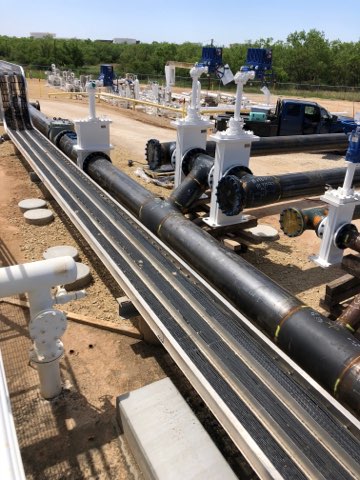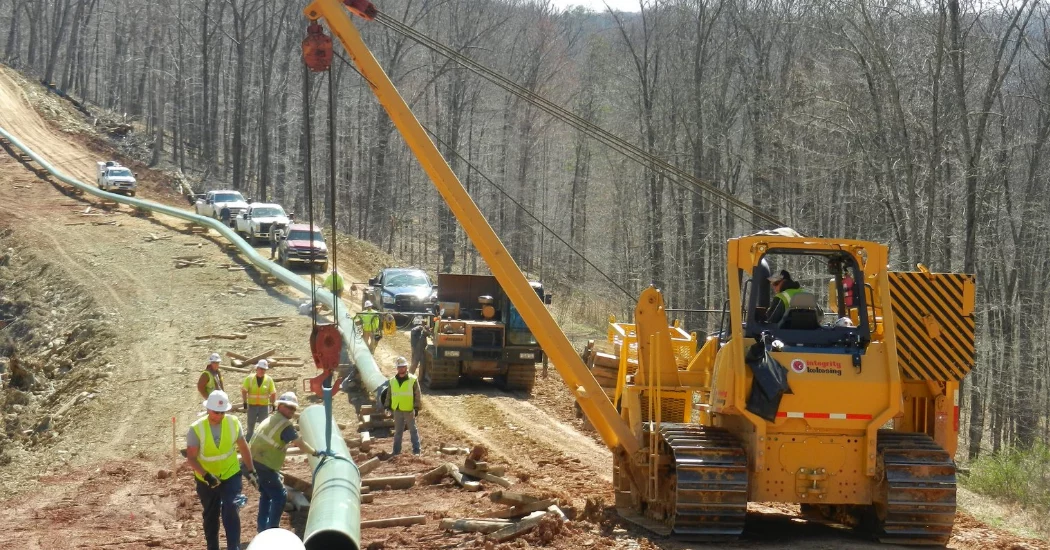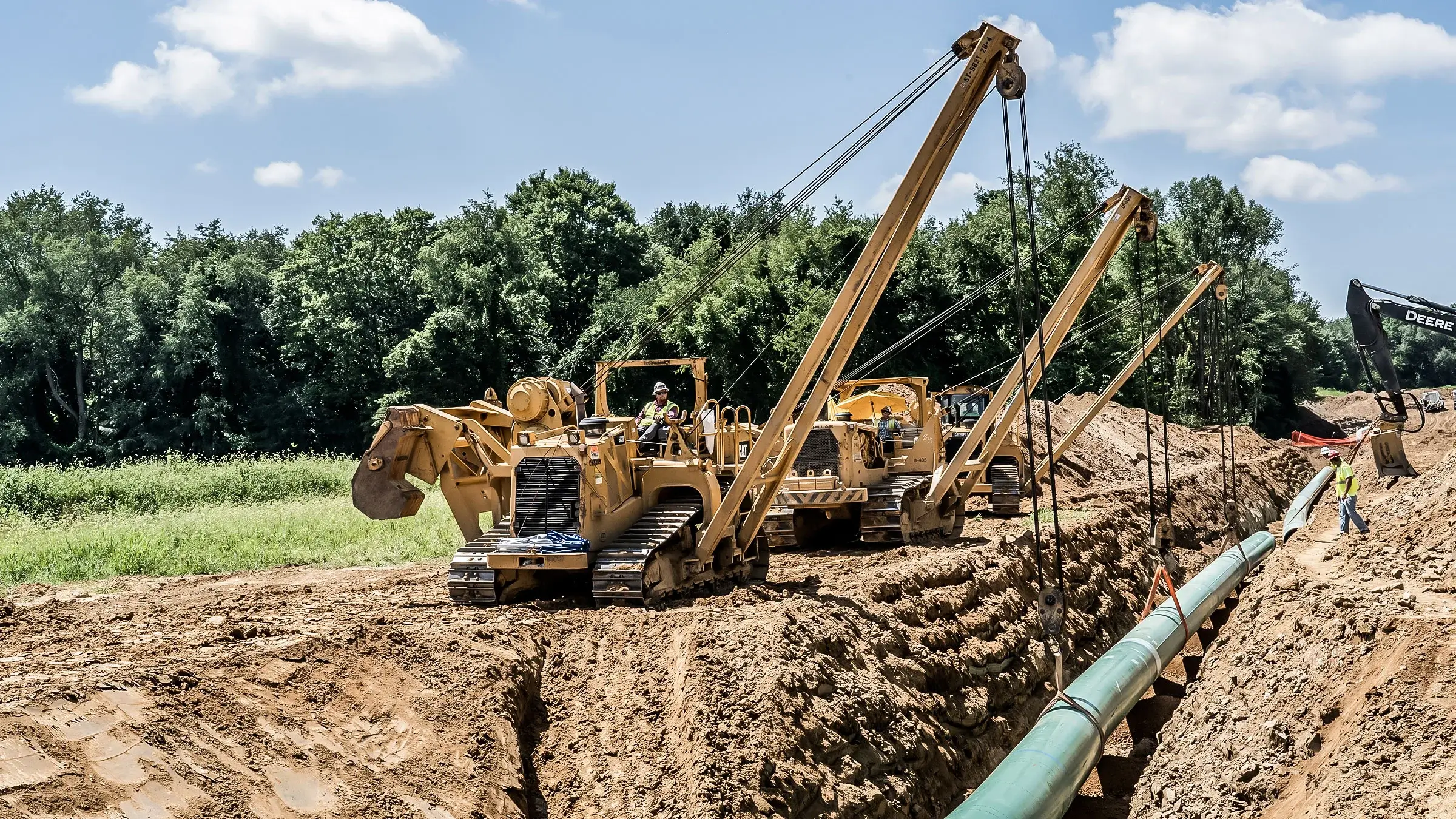How to Choose the Right Pipeline Construction Services for Your Infrastructure Project
Wiki Article
Checking Out the most up to date Technologies in Pipeline Construction Providers for Modern Projects
The Pipeline Construction industry is going through substantial modifications. Advancements such as smart products and robotics are improving standard practices. These improvements promise to enhance effectiveness and safety. Furthermore, AI innovations are improving job monitoring capacities. As these components merge, they question concerning their long-term influence on sustainability and expense. Recognizing these advancements is vital for stakeholders aiming to navigate this evolving landscape. What ramifications do they hold for future tasks?The Rise of Smart Products in Pipeline Construction
As the need for much more lasting and effective Pipeline systems raises, the combination of wise products has emerged as a transformative option in Pipeline Construction. These innovative products have distinct properties that boost the efficiency and durability of pipelines. Self-healing polymers can immediately fix minor leakages, greatly decreasing upkeep prices and downtime. Furthermore, materials installed with sensors can monitor architectural integrity and environmental problems, enabling real-time information collection and evaluation.Additionally, clever materials are usually light-weight and corrosion-resistant, which not just streamlines installment however additionally prolongs the life expectancy of the systems. Their flexibility allows pipes to hold up against severe ecological problems, promoting security and integrity. As markets increasingly focus on sustainability, the usage of eco-friendly smart products adds to lowered ecological impact. Generally, the surge of clever products notes a remarkable change in Pipeline Construction, leading the way for innovative services to fulfill modern framework needs.
Innovations in Robotics for Setup and Upkeep
The assimilation of smart products in Pipeline Construction is complemented by advancements in robotics, which are changing setup and upkeep processes. Robotic modern technologies, such as automated welding systems and drones, boost effectiveness and precision, lowering human error and minimizing safety dangers. These robotics can operate in challenging settings, making sure that installations are carried out in harmful or remote locations without placing workers at danger.Moreover, robot examination tools outfitted with sophisticated sensing units provide real-time data on Pipeline stability, permitting positive maintenance. They can detect leaks or structural weaknesses, making it possible for prompt interventions that extend the life-span of Pipeline systems. Using robotics not only speeds up the Construction timeline yet additionally maximizes resource allowance, bring about set you back savings. As these technologies continue to progress, they are readied to play a critical duty in forming the future of Pipeline Construction, guaranteeing integrity and sustainability in facilities advancement.
AI-Driven Task Monitoring Equipment Changing Workflow
AI-driven job monitoring devices are improving process in Pipeline Construction by boosting decision-making processes with improved accessibility to real-time information analytics. These devices make it possible for groups to react promptly to task developments, consequently boosting performance. Moreover, structured communication channels foster collaboration amongst stakeholders, better optimizing task end results.Boosted Decision-Making Procedures

Real-Time Data Analytics
Using real-time data analytics, contemporary project administration devices reinvent operations in Pipeline Construction. These sophisticated tools take advantage of artificial knowledge to supply instantaneous insights into task performance, resource allotment, and prospective risks. By continually keeping track of crucial performance indications, groups can promptly adjust to altering conditions, enhancing labor and products use. The integration of real-time information enables even more informed decision-making, decreasing delays and reducing expenses. Furthermore, predictive analytics can determine fads and forecast difficulties before they escalate, improving general task effectiveness. Therefore, Pipeline Construction business that adopt these AI-driven tools can improve project timelines and results, guaranteeing they continue to be affordable in a significantly intricate industry landscape. This technology notes a considerable change toward data-centric monitoring methods.Structured Communication Networks
Effective communication is paramount in Pipeline Construction, where many stakeholders have to team up seamlessly to ensure task success. The intro of AI-driven project monitoring devices has actually reinvented communication networks within the industry. These devices promote real-time information sharing, allowing teams to accessibility updates, share papers, and track progress successfully. By automating regular tasks and providing a central platform for interaction, these technologies get rid of misconceptions and lower delays. Boosted exposure right into project timelines and resource allotment fosters liability among team participants. Additionally, AI analytics can determine potential interaction voids, making certain aggressive analytical. Inevitably, streamlined interaction channels not only enhance operations however likewise boost overall job efficiency, enabling Pipeline Construction firms to satisfy contemporary demands effectively.Boosted Security Procedures Via Innovation Integration
The assimilation of modern technology in Pipeline Construction has resulted in boosted safety protocols. Real-time tracking systems, wearable security tools, and automated risk assessments are now vital parts in decreasing hazards on job websites. These technologies not only boost employee safety but also enhance conformity with industry regulations.Real-Time Tracking Solutions
Exactly how can real-time tracking systems transform Pipeline Construction security procedures? By integrating advanced technology, these systems supply continual security of Construction tasks, making certain immediate detection of potential threats. Sensors and video cameras can monitor environmental problems, devices performance, and labor force movements, delivering important information in genuine time. This proactive method enables project supervisors to determine dangers before they rise, substantially enhancing security actions on-site. In addition, real-time surveillance assists in compliance with governing demands, guaranteeing that security criteria are satisfied consistently. The ability to assess information instantaneously sustains informed decision-making, enabling timely treatments. Therefore, Pipeline Construction tasks can run a lot more successfully while securing the well-being of employees and reducing accidents, thereby changing the industry's safety and security landscape.Wearable Security Instruments
Frequently, wearable safety tools are being integrated into Pipeline Construction to improve security methods. These innovative tools, consisting of wise helmets, vests, and wristbands, are developed to check employee wellness and environmental conditions in real-time. Furnished with sensors, these tools can discover threats such as poisonous gas direct exposure, excessive warmth, or high sound degrees, giving immediate informs to managers and employees. In addition, wearable technology usually includes GPS tracking features, enabling effective place surveillance of personnel on-site. This capability not only help in quick reaction during emergencies however also improves overall task administration. By prioritizing employee safety and security via modern technology assimilation, Pipeline Construction firms are making significant strides in decreasing mishaps and promoting a society of safety and security within the industry.
Automated Risk Analyses
While standard threat analyses see this website frequently count on hands-on examinations, the combination of computerized threat assessment technologies is changing safety and security procedures in Pipeline Construction. These innovative systems take advantage of information analytics, synthetic intelligence, and machine knowing to determine prospective dangers a lot more precisely and effectively. By continually monitoring ecological conditions, equipment standing, and worker behavior, automated assessments provide real-time understandings that improve decision-making. This positive approach lowers the chance of mishaps and enhances compliance with safety guidelines. Furthermore, automated threat analyses can be updated quickly, guaranteeing that all stakeholders have accessibility to the most recent info. Therefore, Pipeline Construction jobs take advantage of a much safer work atmosphere, minimizing interruptions and promoting a society of safety via modern technology combination.Lasting Practices in Pipeline Construction
As the need for energy facilities increases, the Pipeline Construction industry progressively focuses on sustainable methods that reduce environmental effect. Business are embracing environment-friendly products and sophisticated Construction techniques to lower their carbon footprint. As an example, using trenchless innovation permits Pipeline setup with very little disruption to the surrounding atmosphere, reducing and maintaining all-natural habitats soil disintegration.
Additionally, the application of renewable resource sources, such as solar or wind, to power Construction tasks is acquiring grip. This change not just lowers dependence on fossil fuels but also enhances the total sustainability of Pipeline tasks. In addition, reliable waste administration methods, including recycling and recycling products, are becoming criterion in the industry.
Real-Time Monitoring and Predictive Upkeep Solutions
The change towards sustainable practices in Pipeline Construction has actually led the way for the combination of real-time surveillance and predictive maintenance remedies. These modern technologies leverage progressed sensing units and data analytics to continuously analyze Pipeline stability and functional performance. By accumulating information in actual time, operators can find anomalies such as leaks or stress declines prior to they rise into significant issues. This proactive method not only decreases ecological threats but also minimizes downtime and upkeep expenses.Anticipating maintenance utilizes algorithms to anticipate possible failings based upon historic information and existing efficiency metrics. This makes it possible for timely treatments, maximizing upkeep schedules and resource allocation. In general, real-time tracking and anticipating upkeep options represent a significant improvement in Pipeline Construction, improving security and dependability while supporting sustainability goals. As industries remain to embrace these advancements, the functional landscape of Pipeline management is set to progress drastically, making sure lasting practicality and efficiency.
The Role of Drones in Surveying and Inspection
Drones have become transformative tools in the checking and assessment of pipelines, supplying enhanced effectiveness and accuracy. Their ability to capture high-resolution pictures and videos from various angles permits extensive assessments of Pipeline integrity without risking human safety and security. Geared up with innovative sensing units and thermal imaging capabilities, drones can identify leakages, rust, and architectural anomalies that might not be visible to the nude eye.The deployment of drones considerably lowers examination time, enabling quicker decision-making for maintenance and repair work. This efficiency converts to set you back savings and marginal interruption to bordering settings. Drones can also access hard-to-reach areas, such as rugged terrains or raised frameworks, better expanding the extent of evaluations.
As the Pipeline sector proceeds to embrace technical improvements, the combination of drones right into evaluating and examination processes is expected to expand, establishing new standards for operational quality and safety in Pipeline Construction solutions.
Frequently Asked Inquiries
What Are the Costs Connected With Modern Pipeline Construction Innovations?
The expenses related to modern-day Pipeline Construction advancements usually consist of innovative products, specialized labor, and cutting-edge technology. These factors add to greater first financial investment, however can lead to lasting financial savings via boosted effectiveness and decreased upkeep demands.Just How Do Regulatory Changes Effect Pipeline Construction Technologies?
Regulatory adjustments substantially affect Pipeline Construction technologies by necessitating the fostering of much safer, much more efficient approaches. Conformity requirements often drive technology, leading to advancements in products, style, and Construction website link strategies that improve overall task sustainability and safety.What Skills Are Needed for Jobs in Advanced Pipeline Construction?

Careers in innovative Pipeline Construction need know-how in engineering principles, project monitoring, safety procedures, and ecological guidelines. In addition, skills in modern technology integration, teamwork, and analytical are vital for passing through the complexities of modern facilities projects.
Exactly How Can Business Make Sure Compliance With Environmental Criteria?
To guarantee compliance with environmental standards, firms should execute extensive training programs, carry out normal audits, and embrace finest techniques in sustainability. Engaging with stakeholders and checking governing adjustments further reinforces their commitment to ecological stewardship.
What Are the Trick Difficulties Encountering Pipeline Construction Today?
The key difficulties facing Pipeline Construction today include regulative conformity, ecological problems, changing product expenses, labor scarcities, and the requirement for advanced innovation combination (Pipeline Construction Services). These variables make complex project timelines and total efficiency in the marketAs the need for extra efficient and sustainable Pipeline systems boosts, the assimilation of smart i was reading this products has actually emerged as a transformative solution in Pipeline Construction. AI-driven job monitoring tools are improving process in Pipeline Construction by improving decision-making processes through enhanced accessibility to real-time information analytics. While job administration in Pipeline Construction has commonly counted on hand-operated processes, the combination of advanced tools significantly enhances decision-making capabilities. Utilizing real-time data analytics, modern task administration tools change operations in Pipeline Construction. Occupations in sophisticated Pipeline Construction require competence in engineering principles, job management, safety and security methods, and environmental regulations.
Report this wiki page